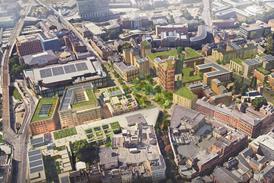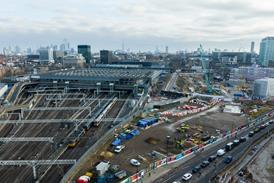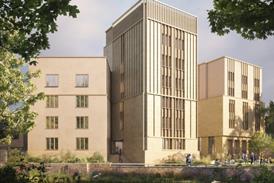Architecture has long been used to express political and moral ideology. In the post truth world maybe Trump could stick with a model and flythrough of his Mexican border wall, says Hank Dittmar

Donald Trump is the first developer to become president, and his proposal for a Mexican border wall shows he knows a lot about the usefulness of architecture in marketing and symbolism. Architecture has often been a political football.
The intrinsic qualities of commodity, firmness and delight have long been agreed the essentials of architecture, though in these relativist days, delight has come in for a bit of a kicking. How architecture conveys status, wealth, or class has been the subject of more debate, but it is undeniable that both architects and their clients have sought to tell a story about themselves through their buildings.
The intended messages have varied over time, yet the use of the act of building to signify has not. Nor has the identification of architecture with a particular time ceased to be used as a cudgel in the style wars. The architects of the Enlightenment saw classicism as representing logic, rationality and a brighter future. The framers of the United States constitution saw the architecture of the Greeks as symbolic of democracy and freedom from despotism. Ruskin and Pugin argued that classicism was pagan, idolatrous and enslaving, elevating the Gothic style as the embodiment of piety and honesty. Later generations have picked up this theme, associating classicism with fascism and slavery.
Modernism has undergone the same transitions and appropriations. Beginning with the Bauhaus ideas of craft and simplicity, modernist architecture was soon saddled with erasing class barriers, creating housing for all and ushering in the freedoms of the machine age. With the International Style, modernism became the symbol of globalisation, and in recent years, high tech architecture has strayed far from its socialist roots to become the mode of expression for corporations and high net worth towers.
And in the post-truth world it seems one doesn’t even have to build the building to brandish it as totem
Of course the association of a particular style with a particular ideology is nutty, but architecture does establish hierarchy and the more important buildings do tell us what an epoch values — whether it is cathedrals, palaces, parliaments, or shopping malls and luxury tower blocks.
And in the post-truth world it seems one doesn’t even have to build the building to brandish it as totem. The announcement that Paris will build seven new towers in La Defense as home for the capital and companies that will flee a post Brexit Britain has already served its purpose, whether or not the buildings are actually constructed, by sending a signal that even as Britain closes its doors, France and Europe are opening them for investors.
Even when a building is built, it can be post-factual. The Trump Organization opened a new Trump Tower in Vancouver this month, touting it as the first new tower in six years and as Vancouver’s largest building of 69 storeys. In fact, it is Vancouver’s second tallest building, numerous buildings have opened in recent years and it is only 62 storeys high. This kind of size inflation is not new to Donald Trump, Trump Tower in New York is claimed to be ten storeys higher than it really is. Trump has repeated this trick at least seven other times.
The biggest symbol of Trump’s Presidential campaign was the border wall with Mexico. Borrowing imagery from Cold War Berlin, he has promised to build the “biggest, beautifulest wall” to keep all “the bad hombres” in Mexico out. Campaign promises that Mexico will fund the wall have unravelled and a recent report found that of the more than $21 billion US needed to build the wall, only $20 million is available — not enough to even begin construction. Nevertheless, the Trump Administration has begun soliciting architects and engineers.
My modest proposal for this alternative fact universe is that Trump’s team only commission a model and fly through video of the wall, as that would likely satisfy both The President and his supporters. It could be shown at rallies and on cable TV. If this approach is successful, I would like to extend the idea to many contemporary building proposals. Perhaps a new prize could be established for the best post truth building, saving the rest of us from its reality?
















No comments yet